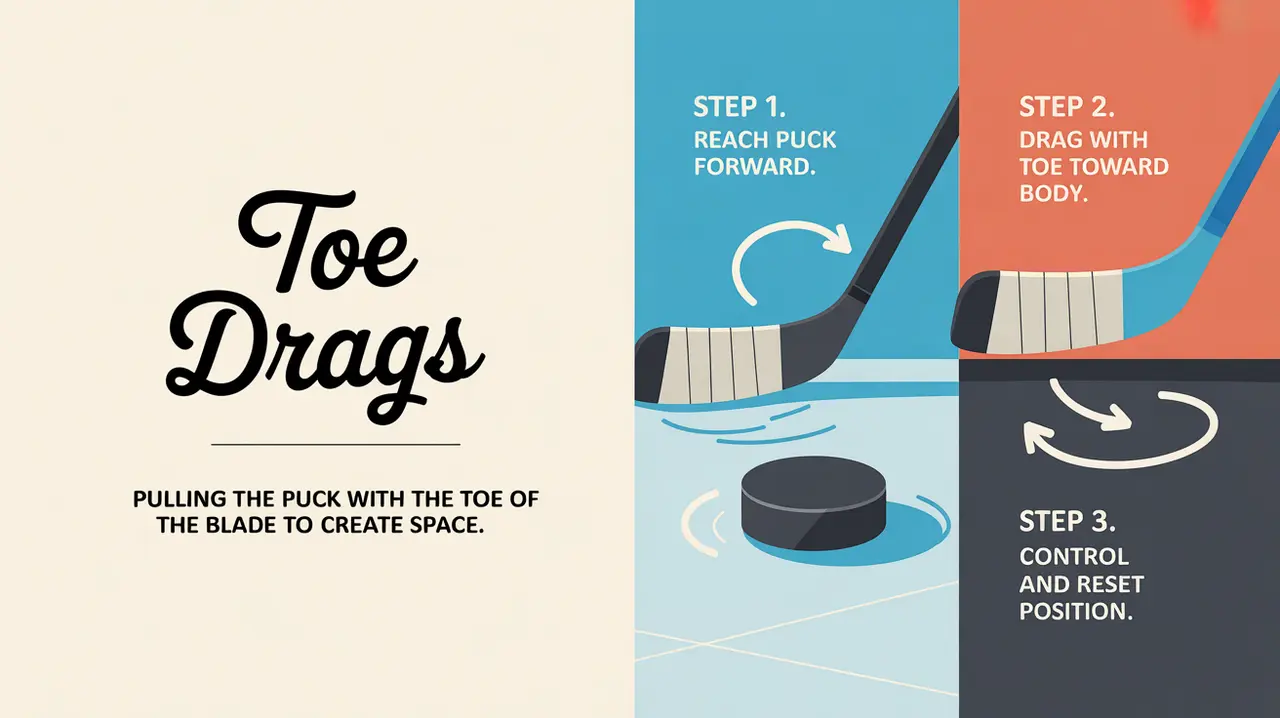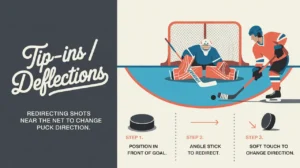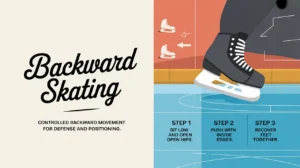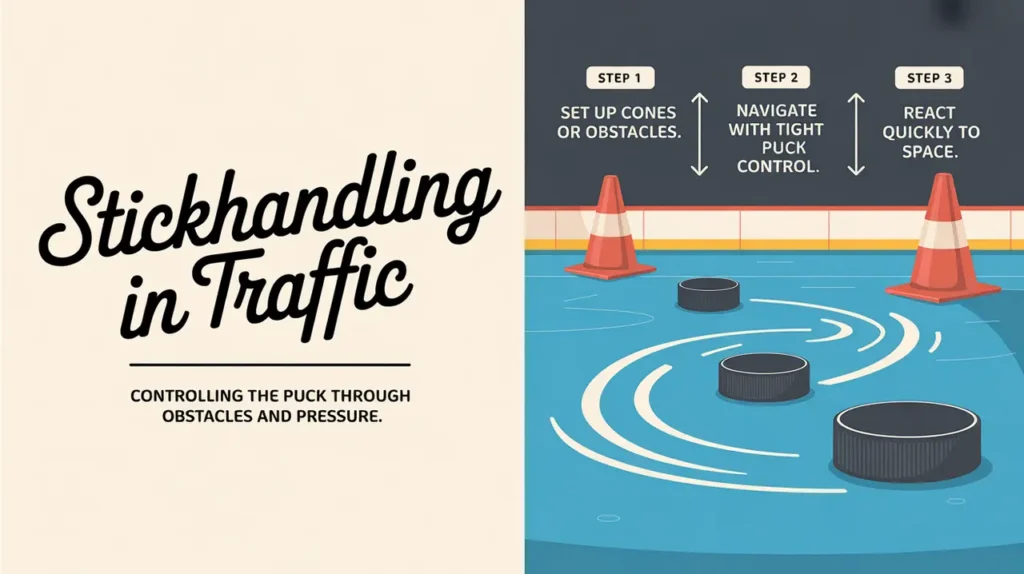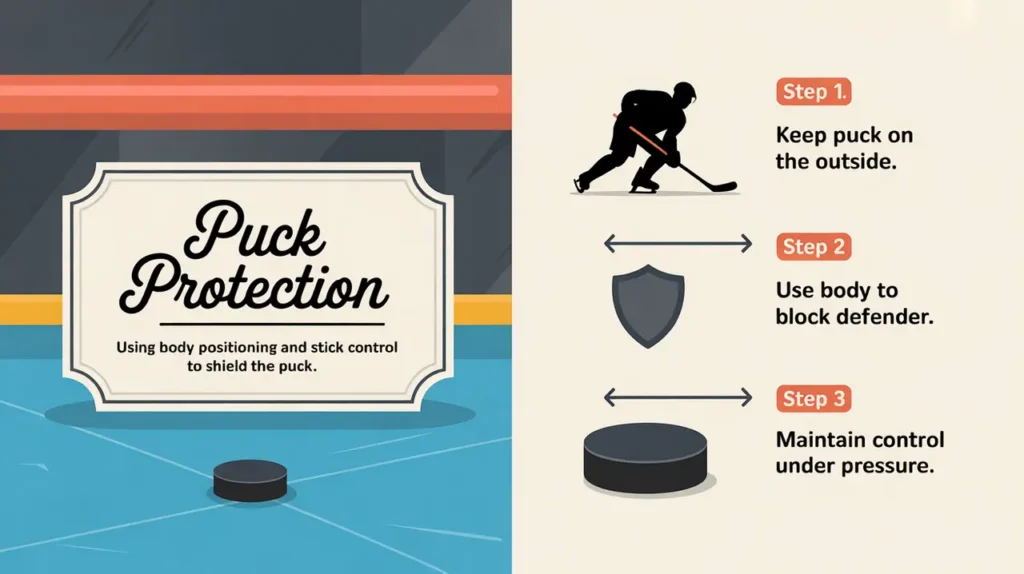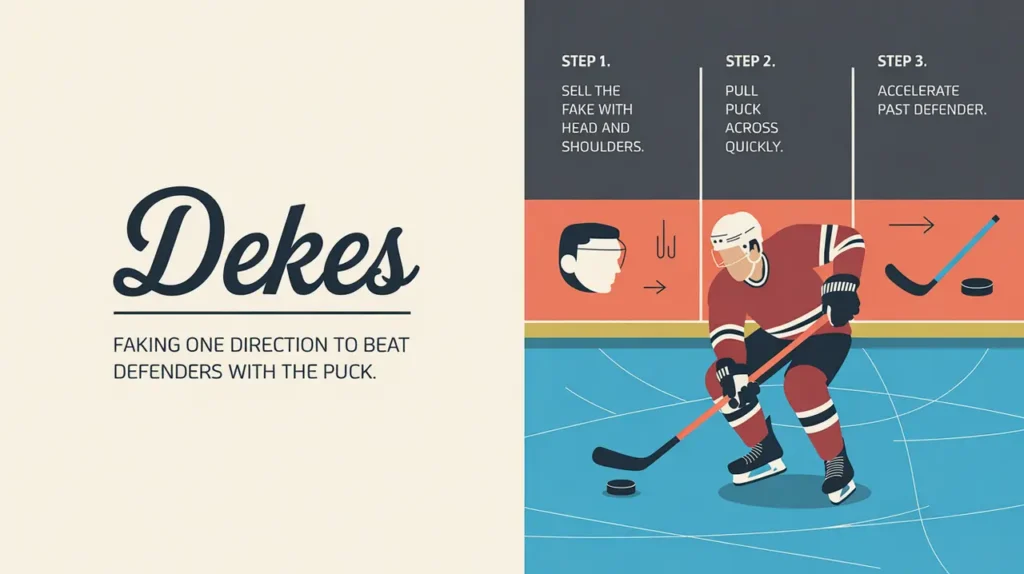Jim’s Intro to Toe Drags
Hi folks, Jim here, the only commentator who once thought “toe drags” were the reason my skates were lopsided.
What are toe drags?
Toe drags are a stickhandling move where a player uses the toe of the blade to pull the puck toward their body before redirecting it to a new position. It’s often used to fake out defenders, change shooting angles, or maneuver around sticks in tight spaces.
How does it work?
Toe drags rely on blade precision, timing, and puck awareness:
- Blade Position: Turn the stick so the toe of the blade cups the puck.
- Pulling Motion: Use the top hand to draw the puck toward your body smoothly and quickly.
- Weight Transfer: Shift your weight slightly to stay balanced as the puck moves.
- Body as a Shield: Pulling the puck in close often brings it behind your body for extra protection.
- Quick Release: Once pulled in, either push the puck back out, deke, or shoot depending on the situation.
- Head Up: Keep scanning to sell the fake and read the defender.
How do you make good decisions with it?
- Pick Your Moments: Toe drags work best when defenders reach or overcommit, not as a go-to move every shift.
- Use It in Space: Give yourself room to execute cleanly. Tight timing in heavy traffic can lead to turnovers.
- Blend It with Speed: A toe drag combined with forward motion is harder to read and more dangerous.
- Hide the Setup: The less obvious your blade positioning, the better the fake.
- Recover Quickly: Be ready to transition into the next move if the drag doesn’t fully fool the opponent.
How do you master it?
Mastering toe drags requires repetition and smooth mechanics. Start stationary, focusing on blade control and quick hands. Gradually add speed, then incorporate the move into skating drills and one-on-one scenarios. Practicing variations, like forehand, backhand, and wide drags, can add versatility.
What does it look like when done right?
A clean toe drag looks sharp, deceptive, and fluid. The puck snaps toward the body in one smooth motion, leaving defenders lunging at empty ice while the player glides past or sets up a shot.
Commentator’s Corner
Jim’s Take
A good toe drag can make a defender look like they’re reaching for a bus that already left the stop.
Parent Tip
Encourage players to learn the move technically before using it in games. Sloppy toe drags lead to easy turnovers.
Player Tip
Relax your hands, use your top hand to control the pull, and keep your eyes up. Timing sells the move.
A Final Thought
Toe drags are precision tools. Master them, and you’ll create space and deception where none existed before.

